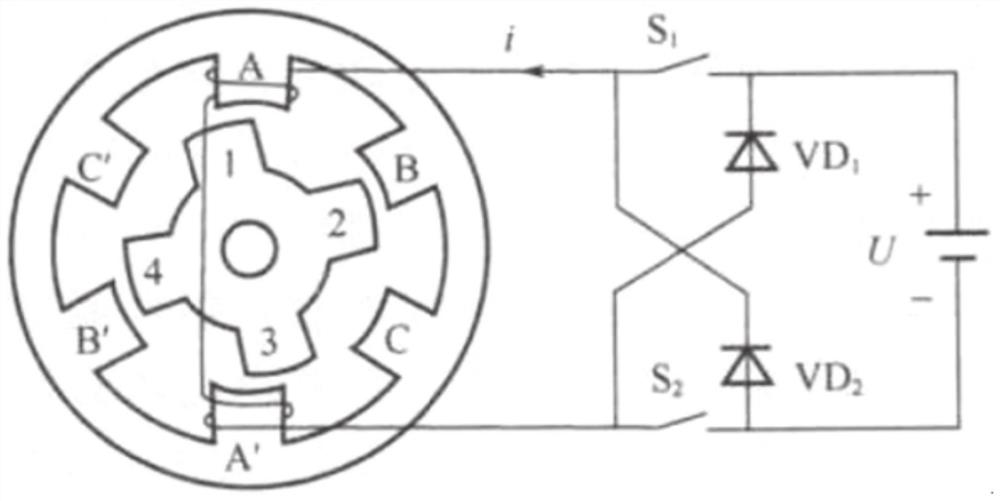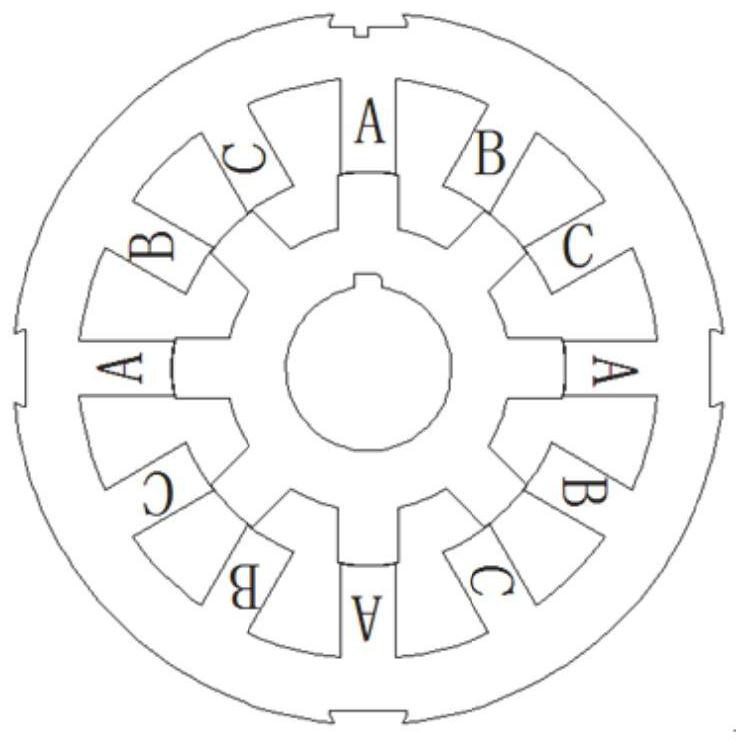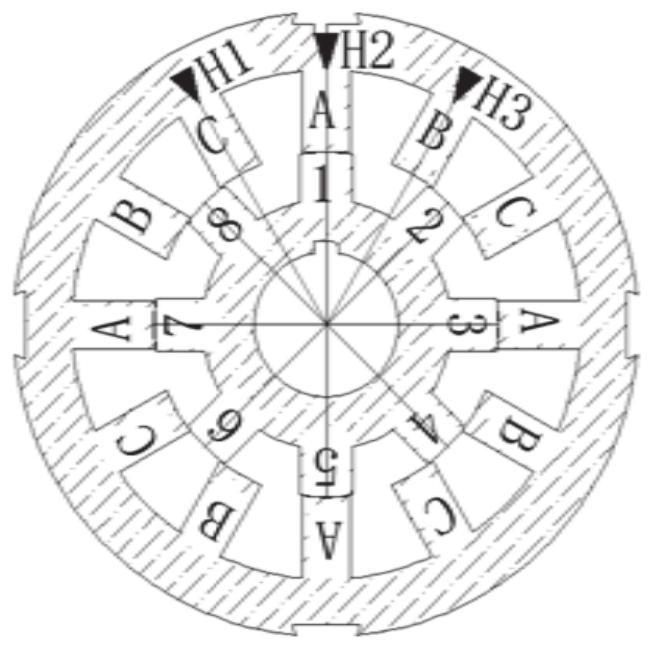Six-Hall three-output motor rotor position sensor and installation method
A technology of motor rotor and installation method, which is applied in the direction of electromechanical devices, electrical components, electric components, etc., can solve the problems of error, error increase, and the inability of Hall devices to function, and achieve the effect of meeting performance requirements and reducing errors
- Summary
- Abstract
- Description
- Claims
- Application Information
AI Technical Summary
Problems solved by technology
Method used
Image
Examples
Embodiment 1
[0082] In a typical implementation of the present disclosure, such as Figure 1-Figure 4 As shown, a six-Hall three-output motor rotor position sensor is proposed.
[0083] There are certain errors in the traditional three-Hall rotor position detection scheme, which brings a lot of inconvenience to the motor control. In order to accurately obtain the position signal of the rotor when the motor rotates in the forward and reverse directions, a position detection scheme of the switched reluctance motor with six Halls and three outputs is proposed.
[0084] Three Hall devices are used to detect the rotor position when the motor is rotating forward, and the other three Hall devices are used to detect the rotor position when the motor is rotating in the reverse direction. In order not to change the number of position detection ports of the motor controller, the six Hall devices The input signal is converted into three output signals by a logic circuit, such as Figure 11 As shown,...
Embodiment 2
[0094] In another typical implementation of the present disclosure, such as Figure 19-Figure 23 As shown, a working method of the six-Hall three-output motor rotor position sensor as described in Embodiment 1 is given.
[0095] In order to clearly illustrate the problem, the motor is expanded along the circumference, as shown in Figure 19 shown. In practical application, the magnetic ring is fixed at the proper position of the rotor, and the ideal output signal is obtained by adjusting the positions of the two Hall detection circuit boards. In essence, as long as the position where the centerline of the stator teeth of one phase of the motor is aligned with the centerline of a certain rotor tooth can coincide with the moment when the level of the Hall sensor of this phase jumps, the rotor position of the motor can be accurately positioned. The motor and Hall sensors are deployed along the circumferential direction, and the six Hall devices are installed near the centerline...
Embodiment 3
[0106] In yet another exemplary embodiment of the present disclosure, such as Figure 24-1-Figure 24-6 As shown, a method for installing the rotor position sensor of a six-Hall three-output motor as described in Embodiment 1 is given.
[0107] Include the following steps:
[0108] Arrange the induction magnetic ring on the rotor, and fix the Hall assembly on the motor end cover;
[0109] Energize one phase winding of the motor to drive the rotor to move to align the rotor teeth of one phase with the center line of the stator teeth of one phase;
[0110] Adjust a group of Hall components to rotate in the first direction until the corresponding Hall components jump, fix the group of Hall components, connect and lock with the motor end cover;
[0111] Energize one phase winding of the motor to maintain the alignment of the rotor teeth of one phase with the center line of the stator teeth of one phase;
[0112] Adjust another group of Hall components to rotate in the second dir...
PUM
 Login to View More
Login to View More Abstract
Description
Claims
Application Information
 Login to View More
Login to View More - Generate Ideas
- Intellectual Property
- Life Sciences
- Materials
- Tech Scout
- Unparalleled Data Quality
- Higher Quality Content
- 60% Fewer Hallucinations
Browse by: Latest US Patents, China's latest patents, Technical Efficacy Thesaurus, Application Domain, Technology Topic, Popular Technical Reports.
© 2025 PatSnap. All rights reserved.Legal|Privacy policy|Modern Slavery Act Transparency Statement|Sitemap|About US| Contact US: help@patsnap.com



